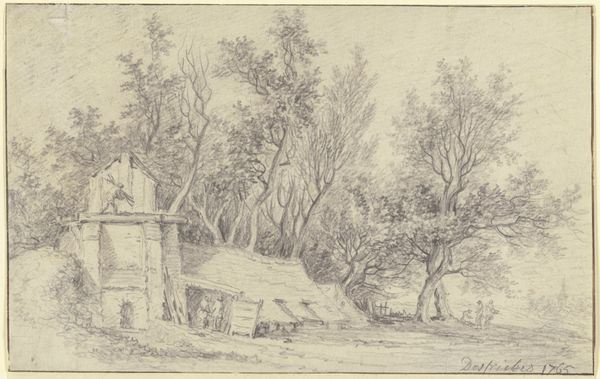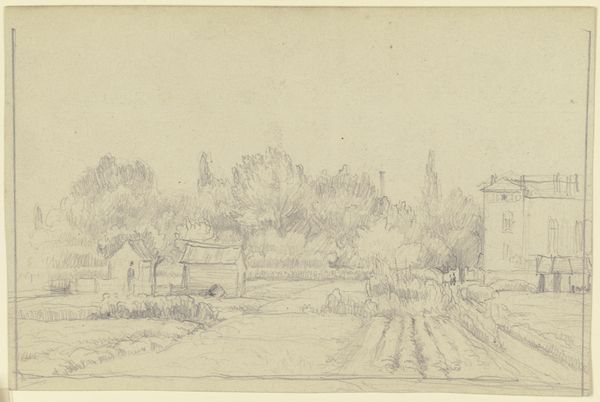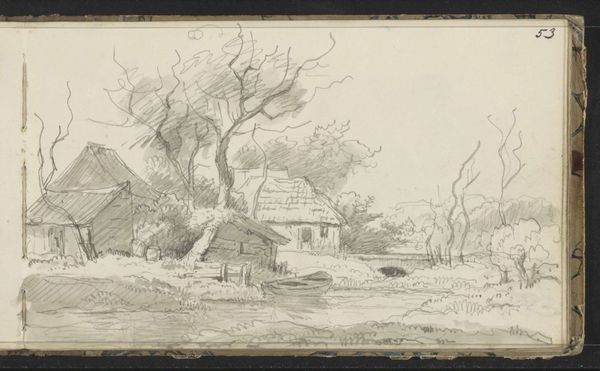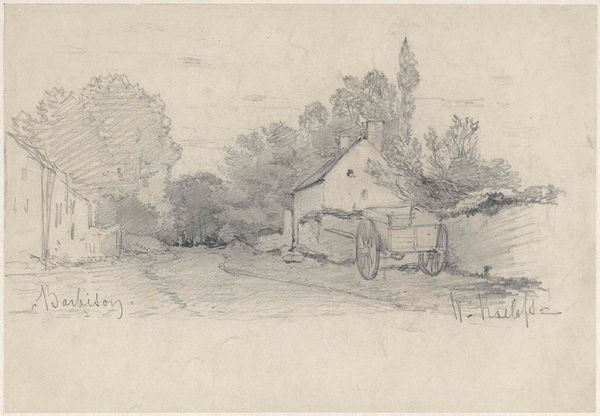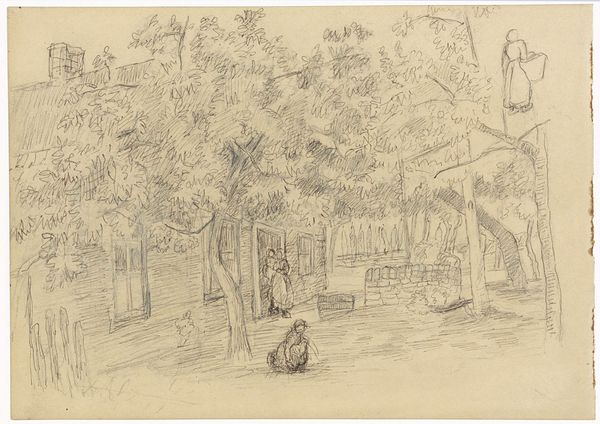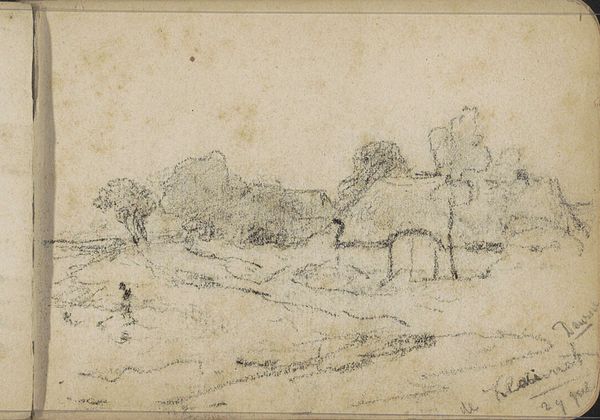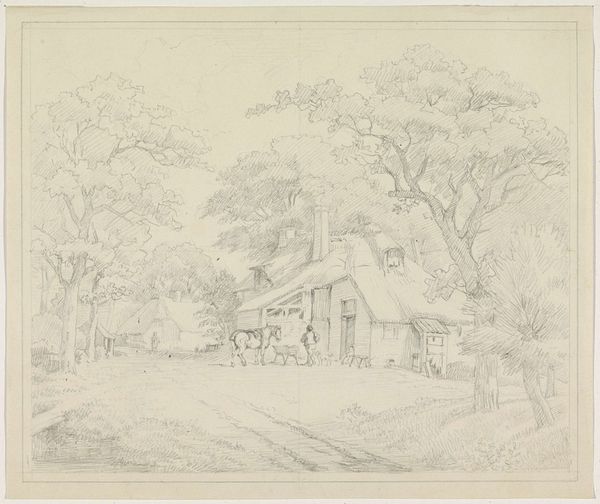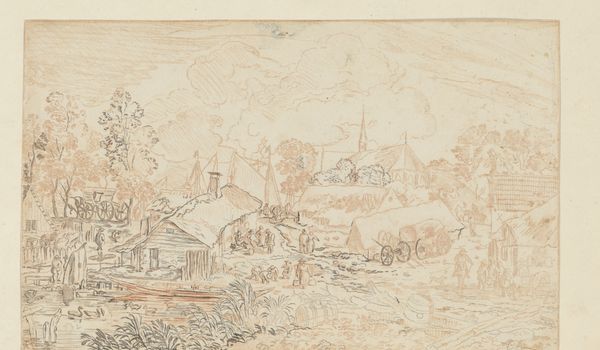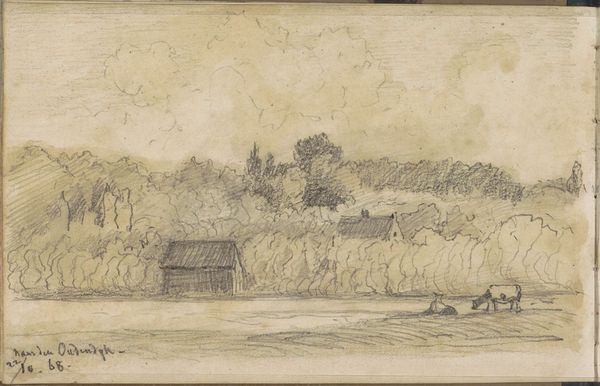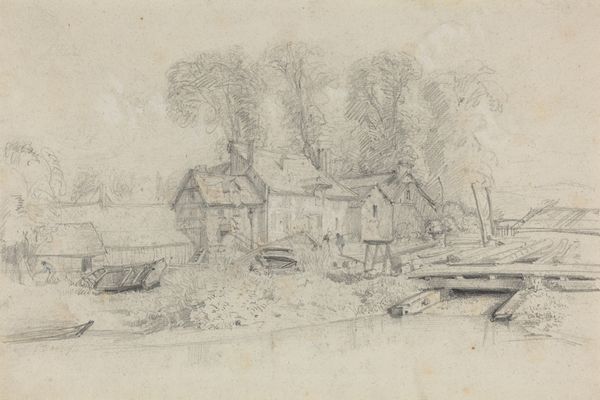
drawing, pencil
#
drawing
#
dutch-golden-age
#
landscape
#
pencil
#
genre-painting
#
realism
Dimensions: height 201 mm, width 284 mm
Copyright: Rijks Museum: Open Domain
Curator: Here we have Jozef Israëls's drawing "Boerderij tussen bomen," or "Farm Among the Trees," a pencil sketch from sometime between 1834 and 1911. It's currently held here at the Rijksmuseum. Editor: The first impression is quite delicate, isn’t it? Almost dreamlike. The subtle gradations of shading give it an ethereal quality, like a memory fading at the edges. Curator: Indeed. Jozef Israëls was known for capturing scenes of everyday life with a distinct sense of empathy and emotional depth. His imagery, often drawn from rural and working-class life, aligns with broader Realist themes, but maintains a particular softness. Note how the symbol of home is constructed with vulnerability. Editor: It does feel deeply rooted in the social context of its time. I can see the lives of working-class families embedded within these sketches, these genre-paintings. Are we meant to idealize rurality, or interrogate its connection with poverty? Look at that figure leading the horse, or the labor that tilling the fields implied in those times. Curator: I see this work tapping into something much more perennial about our connection to the land, but from an individualized, introspective vantage point. The rough textures rendered through delicate pencil work suggests a humble aesthetic and subject. It gives a feeling of an idyllic continuity and harmony with the natural world. A quiet beauty of belonging and familiarity—not unlike genre painting, where archetypes evoke shared community identity through collective symbol sets. Editor: Yes, and I notice the Dutch Golden Age influences apparent, for example, in that attention to landscapes which nevertheless reflect the burgeoning tensions of urban life impacting on class structures. We get a hint of the kind of precarity many experienced during this period through his lens. Curator: An interesting viewpoint to consider, I think. Editor: For me, Israëls' drawing serves as a reminder of the historical roots of today's societal landscapes, so, what better reason to see its place in cultural history and collective memories? Curator: I like that—a potent convergence that lingers on in its symbolism and rendering.
Comments
No comments
Be the first to comment and join the conversation on the ultimate creative platform.
